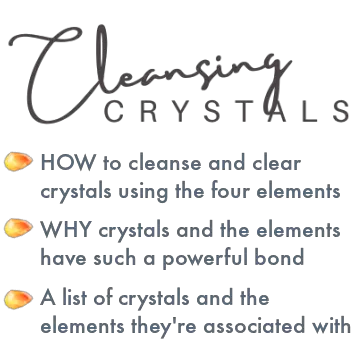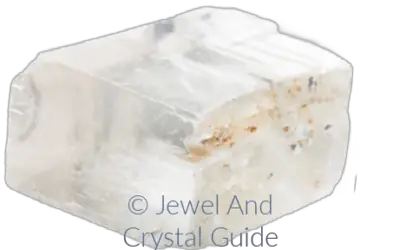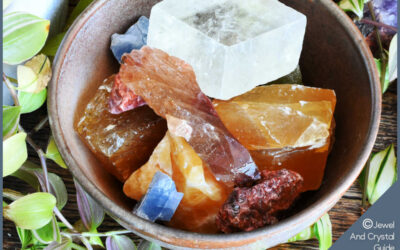Aventurine is a shimmering quartz crystal that has so much to offer. But did you know that aventurine comes in many colors and each one means something different?
There are 8 colors of aventurine: green, blue, red, peach or orange, brown, yellow, gray, and purple. All of these are real and natural aventurine colors that come in different shades, with green being the most common color and yellow usually the rarest.
There is no best aventurine color as it depends on what you like, your situation, and your intentions. Each color brings something different, so trust your intuition and choose the one that draws you in, as that is aligned with your current needs and desires. And don’t be surprised if this color changes over time.
In this blog post, you’ll:
- Learn more about each aventurine color
- Get a table comparing the rarity, elements, benefits, and chakras of each color
The colors of aventurine
Aventurine comes in eight colors, which I’ll cover in more detail below.
Green Aventurine: A Symbol of Abundance and Emotional Healing
If you’ve seen my full guide to aventurine, you’ll know that green aventurine is the most common and most popular variety of this crystal. It usually gets its color from the element fuchsite, a green mica. This element also gives green aventurine a beautiful shimmer, called aventurescence.
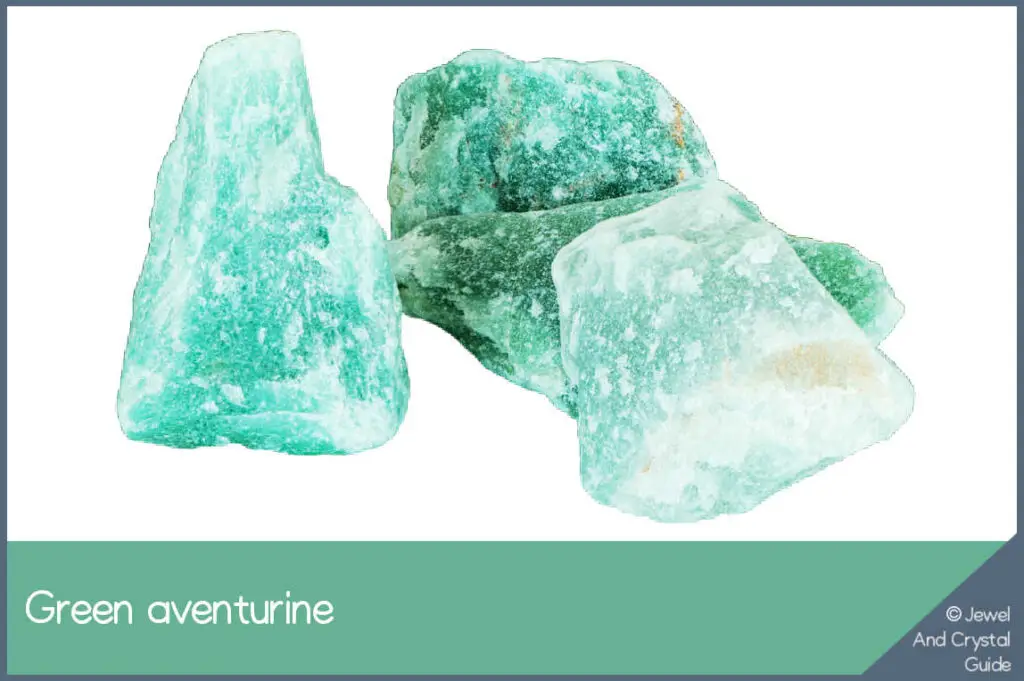
Most green aventurine comes from Brazil, India, and Russia.
Aventurine comes in many shades of green, from light to a dark forest green. In fact, some green aventurine is so dark that’s it’s confused with jade. All of these shades of green occur naturally, and the more fuchsite is in the aventurine, the darker it is.

Green aventurine is linked with the heart chakra and solar plexus chakra, and it’s often used for matters of the heart, such as love, compassion, and relationships. The color also brings luck, abundance, and emotional healing. It’s known to attract opportunities, calm and soothe emotions, encourage optimism, and enrich one’s sense of well-being.
Blue Aventurine: Enhancing Communication and Mental Clarity
Blue aventurine is generally a common color of aventurine. It gets its color from a mineral called dumortierite. This mineral is fibrous and reflects a lot of light, so blue aventurine shimmers under the right conditions.
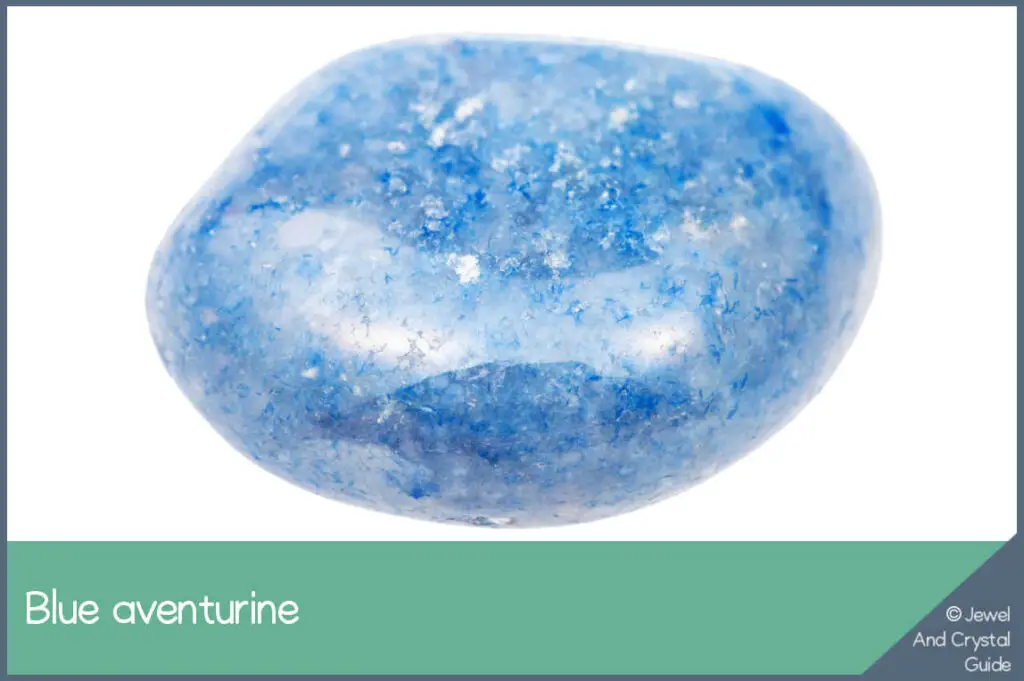
Most natural blue aventurine comes from Brazil and India.
Blue aventurine is used for communication, self-expression, and mental clarity. It improves verbal skills and creativity, and enables a harmonious flow of thoughts and ideas. This color also helps to overcome fear and anxiety, and brings calm.
Red Aventurine: Igniting Vitality and Passion
Red aventurine is relatively rare. It gets its color from a mineral with a metallic luster called hematite, an iron oxide that ranges from reddish-brown to deep red. Red aventurine can have a subtle shimmer to it under certain lighting conditions, which is often described as a red or coppery reflection.
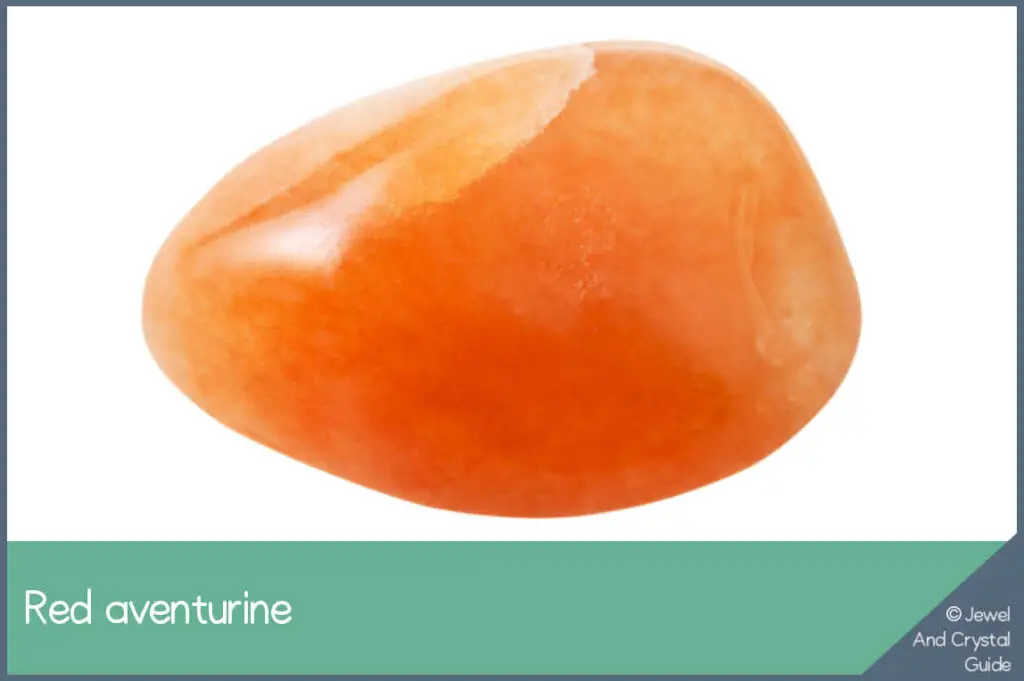
Most natural red aventurine comes from Brazil, India, and Russia.
Red aventurine symbolizes vitality, passion, and courage. It boosts confidence and physical strength, and inspires creative pursuits, making it an excellent companion for those seeking empowerment, courage, and assertiveness.
Peach Aventurine: Soothing Emotions and Encouraging Compassion
Peach aventurine is not rare. It is usually a light to medium shade of peach or pale orange, which comes from a red iron oxide called hematite. Peach aventurine has a smooth and opaque appearance, with a little shimmer under the right lighting.
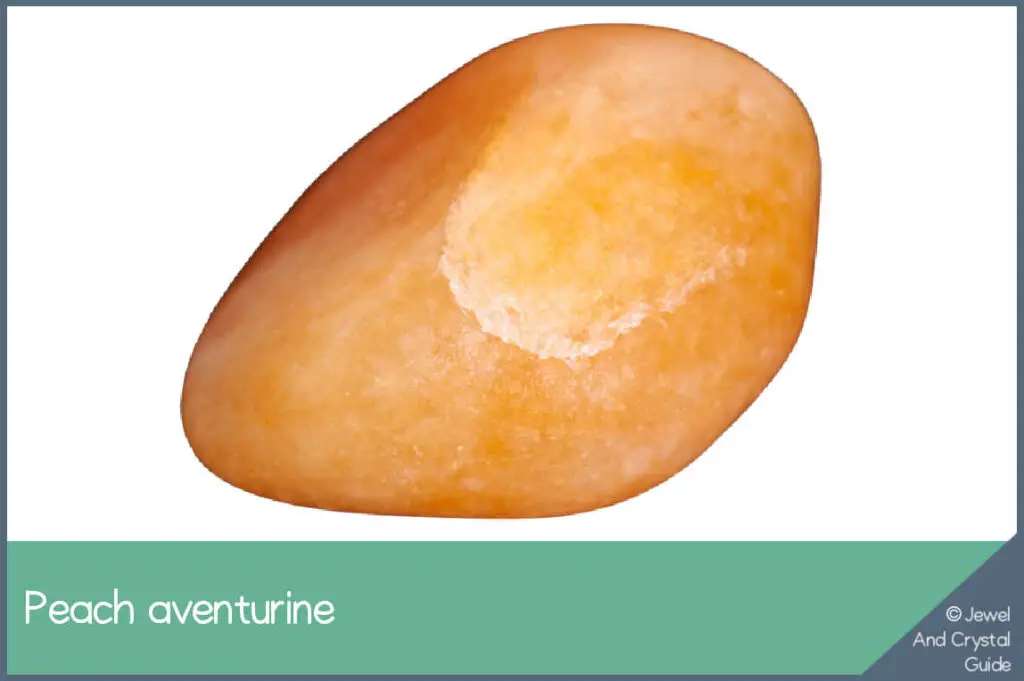
Most natural peach aventurine comes from Brazil, India, and Russia.
Peach aventurine soothes emotions, and brings compassion and forgiveness. It also relieves stress and anxiety, helps with self-acceptance, and nurtures a loving and empathetic mindset.
Brown Aventurine: Grounding Energy and Enhancing Stability
Brown aventurine is not considered rare. Its natural color ranges from a soft, sandy brown to a deep chocolate brown or mahogany. This coloring comes from iron oxide minerals like hematite and goethite.
Brown aventurine typically does not have much of a shimmer or sparkling effect. It is known for being smooth and opaque, with good reflective qualities. While some crystals may have a subtle sheen, most don’t.
Most natural brown aventurine comes from Brazil, India, and Russia.
Brown aventurine brings grounding and stability, providing a firm anchor in the physical realm. It helps to establish a sense of balance, practicality, and reliability, making it ideal for those who need support when going through a lot of changes. This crystal color also helps with manifesting goals and intentions.
Yellow Aventurine: Fostering Optimism and Abundance
Yellow is considered to be quite a rare color of aventurine, if not the rarest. The rarity of all the colors depends on things like location, availability, and market demand. There is no definitive consensus on which color of aventurine is the rarest, as rarity can be subjective and change over time.
Yellow aventurine ranges from a pale lemony yellow to a deeper, golden-yellow color, depending on things like mineral inclusions, impurities, and the conditions when it formed.
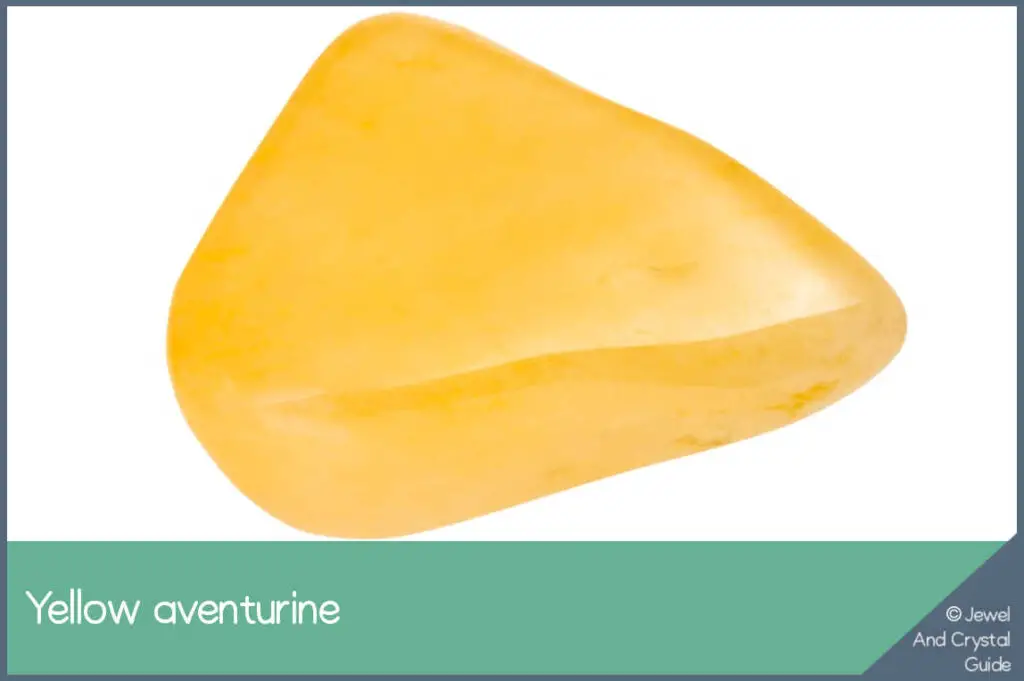
Yellow aventurine gets its color from minerals like fuchsite, a green variety of mica. Some of these yellow crystals have a subtle shimmer or sparkle, though not usually as much as green aventurine.
Most natural yellow aventurine comes from Brazil, India, and Russia.
Yellow aventurine stimulates self-confidence, enhances creativity, and aligns with the energy of prosperity, paving the way for positive transformations and opportunities. This color is associated with optimism, abundance, and personal power. It also enhances self-confidence, manifestation abilities and mental clarity.
Gray Aventurine: Grounding and Transformation
Aventurine can be gray, though this is one of the less common colors of the quartz crystal. Gray aventurine doesn’t usually shimmer, though some crystals might sparkle a little under the right light.
There’s no consensus on what makes aventurine gray, but experts think the gray color might come from:
- Hornblende: Hornblende is a group of dark-colored minerals that can come in shades of gray. It is possible that gray aventurine contains some hornblende, which turns the quartz gray.
- Goethite: Goethite is an iron oxide that comes in different colors, including gray. Although more commonly associated with brown aventurine, it is possible that some gray aventurine crystals have goethite in them.
Most natural gray aventurine comes from Brazil, India, Russia, and China.
Gray aventurine is associated with grounding, emotional balance, and transformation. It helps you find stability during rocky times, brings emotional balance, and promotes personal growth and transformation.
Purple Aventurine: Spiritual Growth and Intuition
Purple is a relatively rare variety of aventurine. It gets its purple color from various minerals and impurities in the quartz matrix. The exact minerals that make it purple vary, and different combinations result in different shades of purple aventurine.
Some possible minerals that contribute to the purple color of aventurine are lepidolite, a type of mica that contains lithium, and sugilite, a rare pink to purple mineral.
Purple aventurine doesn’t usually shimmer, but it does have a smooth, opaque appearance. Some crystals could have a subtle glimmer to them, depending on what’s inside the crystal.
Most natural purple aventurine comes from Brazil, India, and Russia.
Purple aventurine brings spiritual growth, deepens intuition, and establishes a strong connection to higher realms. It supports inner exploration, facilitates psychic development, and helps access wisdom and insights.
A table of aventurine colors
The table below takes a closer look at each color of aventurine, including how rare it is, what elements give it its color, what that color brings, and what chakra each color is associated with:
| Color | Rare | Elements | Benefits | Chakra |
| Green | Not Rare | Fuchsite | Heart-centered, love, compassion, emotional healing | Heart Chakra, Solar plexus chakra |
| Blue | Not Rare | Dumortierite | Communication, intuition, self-expression | Throat Chakra, Third Eye Chakra |
| Red | Quite Rare | Hematite | Vitality, courage, strength | Root Chakra |
| Peach | Not Rare | Hematite | Emotional healing, compassion, nurturing | Heart Chakra |
| Brown | Not Rare | Hematite, Goethite | Grounding, stability, reliability | Root Chakra |
| Yellow | Rare | Fuchsite | Optimism, abundance, self-confidence | Solar Plexus Chakra |
| Gray | Quite Rare | Hornblende, Goethite | Grounding, emotional balance, transformation | Root Chakra, Third Eye Chakra |
| Purple | Not Rare | Lepidolite, Sugilite | Spiritual growth, intuition, connection to higher realms | Crown Chakra, Third Eye Chakra |






